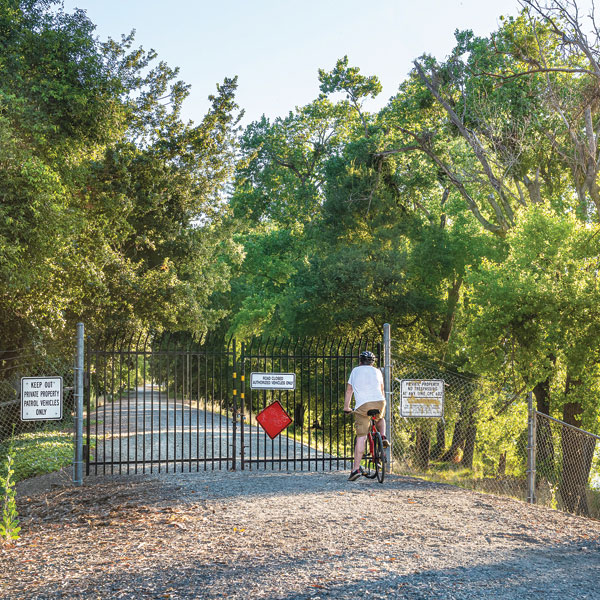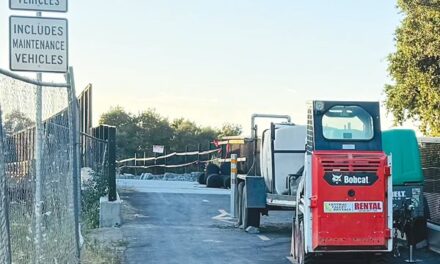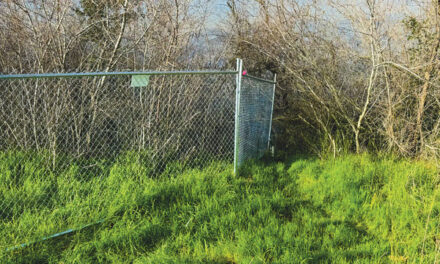For years, levee lovers have known the offensive fences that block people from walking on the Sacramento River levee would disappear during the major levee repairs now underway.
State and city authorities told me (and anyone else who asked) the fences would be removed by construction crews and not replaced. The construction removal was strategic. It was designed to avoid arguments with a few people who live along the river and insist they need fences stretched across the levee for security and privacy.

The homeowners can’t argue with levee repair crews. Construction is a good excuse to clear out illegal fences that should have been bulldozed decades ago. There are nine of them. They all violate their permits—too big, built in the wrong place or reinforced with prohibited accessories such as razor wire.
The removal plan makes political sense. But there’s been a problem. Nobody with authority would put it in writing. Despite my best efforts, I could not find an appropriate official willing to sign a statement saying, “We are getting rid of those damned fences and gates and they aren’t coming back.”
Now it’s in writing. In June, the U.S. Army Corps of Engineers and Central Valley Flood Protection Board published a new Supplemental Environmental Impact Report for the Big Dig levee repair project. While I can’t recommend the document as light reading, there is a wonderful sentence on page 46 that should make Pocket, Greenhaven and Little Pocket residents celebrate:
“Privately owned encroachments removed during the construction will not be replaced.”
That means the fences and gates are gone for good.
The Army Corps and Central Valley Flood Protection Board are agencies that matter when it comes to levees. The Corps is responsible for levee repairs. The flood board, a state bureaucracy, owns the levee and controls access to it.
For decades, the flood board was deferential to a handful of homeowners in Pocket and Little Pocket. Beginning about 50 years ago, the flood board handed out fence and gate permits to property owners, allowing them to build fences that blocked public access. The fences gave property owners exclusive rights to enjoy your levee.
The relationship between the flood board and property owners has always been murky. Rumors simmered about insider deals and special treatment. For many years, riverfront property owners got just about anything they wanted from the flood board.
All they had to do was ask for a permit. The request would be granted. Want to build a levee fence, gate or staircase? No problem. Want to transfer a permit after a property owner died or moved away? Done.
The cozy relationship began to change in the last decade. Residents—many inspired by Inside Sacramento’s crusade for public access along the river—began to complain about the fences. Why can’t I walk the levee? Who put that fence there?
Embarrassed by past excesses, the flood board stopped issuing new levee fence permits. It began to enforce rules against razor wire. The board is legally empowered to yank levee fence permits anytime for any reason.
But fear of being sued by property owners frightened the flood board, which claimed it lacked resources to fight nuisance lawsuits. Once the board realized the deployment of levee repair equipment would require removal of fences, the solution to the longstanding embarrassment over fences was apparent.
A half-century ago, the city of Sacramento promised residents an open levee bike path from Freeport to Downtown. The promise was part of a visionary master plan for parks and recreation. It’s taken generations to fulfill the promise. For all those years, we’ve waited to read 11 words:
“Privately owned encroachments removed during the construction will not be replaced.”
REMEMBERING ROBBIE WATERS
The death of Robbie Waters from coronavirus at age 84 brought countless remembrances of the former City Council member, elected Sheriff and city homicide detective. Many stories focused on his determination, resilience and conservative ways. But there was another side to Robbie. Several times I saw him break into tears while recalling a deceased family pet. And as he prepared for death, he instructed his family to deliver his remains to the care of Morgan Jones, the Broadway funeral home that has served the African American community since 1948. “Charlie Jones will take care of everything,” Robbie told his family. And he did, which is everything you need to know about Robbie Waters.
R.E. Graswich can be reached at regraswich@icloud.com. Follow us on Facebook, Twitter and Instagram: @insidesacramento.
















